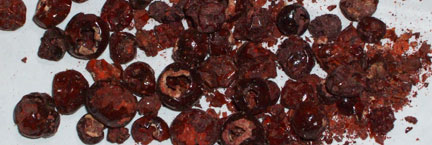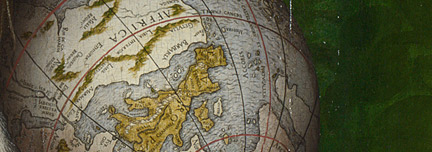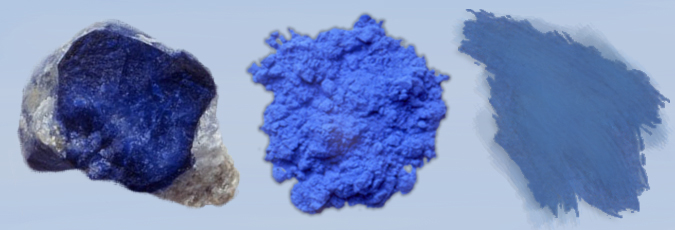Katherine Chater, Geography Teacher, and Alexis Stones, Schools Officer at the National Gallery, sketch the history of lapis lazuli.
A possible route through the painting begins with the semi-precious stone lapis lazuli. This is the semi-precious stone that was used to create the pigment for the deep blue of the sky in Titian's 'Diana and Actaeon'.
Lapis lazuli was mined in a region that is now in Afghanistan. From there, it was taken westwards by traders to sell in Venice, which was the first European port on the trading route from Asia and the Middle East to Europe.
More expensive than gold
More expensive than gold in Titian's day, lapis lazuli has a rich history that begins in the ancient world and presents learning opportunities in geography, chemistry, history, citizenship, RE and art.

Geology and ancient civilisations
Explore the history of lapis lazuli through its geology and importance for ancient civilisations:
- Lapis lazuli contains a mixture of minerals. The striking blue colour comes from the mineral lazurite, but lapis lazuli also contains white calcite, and gold-coloured pyrite or 'fool's gold'. Lapis lazuli is formed when limestone deposits come into contact with hot magma. Look at how other precious stones and minerals were formed.
- Mined and used in the Sumerian, Egyptian, Indus Valley, Babylonian, Greek, Assyrian and Roman civilisations
- The Egyptians used lapis lazuli for amulets as protection from evil – it was believed to be useful in the after-life and was found in many ancient burial sites. It was also used to create eye shadow.
- Etymology reveals its ancient connection: 'lapis' is Latin for 'stone' and 'lazuli' is the Latin version of the Ancient Persian name for the area where the stone was mined – the region is now in Afghanistan. The word 'azure' also comes from 'lapis lazuli'.
- How are paints and pigments made today? In Titian's time, the blue pigment ultramarine was extracted from lapis lazuli rock and then combined with natural oil to create blue paint. For red paint, pigment was made from the bright red dye extracted from dried insects – one example of this is the red curtain Titian painted in 'Diana and Actaeon'.

Mining, natural resources and trade
The Silk Road was a network of trade routes for exotic goods from Asia and the Middle East to Europe for nearly 3,000 years. Questions to explore include:
- How did this trade affect economic and political relations between East and West? How were countries along these trade routes affected?
- What other societies have grown up around natural resources and mining communities through the ages and across the globe? Who gains from these products – the sellers or the buyers? Is the system fair?
- What happens to communities when this industry comes to an end?
- Examine the current state of lapis lazuli mining in Afghanistan. Research other mining industries, for example, diamonds, gold, or minerals used in mobile phones and laptops. Look into the way that the mining industry organises labour and trade.
Trade, development and slavery
Explore the history and impact of trade:
- Why did the Venetian monopoly of the East–West trade route come to an end?
- How did Spain rise to power and develop its own trade routes in the Americas?
- Investigate how trade has led to the development of increasingly complex civilisations through the need for: efficient transport, accounting systems, communication, division of labour, organisation and hierarchy.
- What do societies gain and lose from 'progress'?
- What part has slavery played in industrial development? In Titian's painting, Diana's Ethiopian slave reminds us of the importance of slavery for the ancient Romans and 16th-century Europeans.
- How have changes in trade and natural resources affected the economies of countries today?

Venice, location and development
Learn about the natural formation of Venice's islands and lagoon:
- How did the Venetians make the city we know today, with its canals, tidal lagoon and city buildings?
- Why is Venice 'sinking' and what is being done to slow this process down?
- How do countries protect themselves and recover from natural disasters?
- How have humans interfered with natural water systems? What are the short and long-term effects on eco-systems, health and climate?

